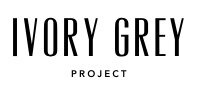How to Build a Social Media Plan for Growth in 2025
Social media is where your future clients hang out. Nearly two‑thirds of the world’s population uses social media and the average person spends about two and a half hours there daily. That means your brand’s Instagram, Pinterest, or LinkedIn feed is often the first touchpoint in the buying journey. A clear plan turns random posts into a system that attracts the right people and turns followers into fans, and I’ll walk you through the steps I took to start my social media growth journey.
Set goals aligned to outcomes
Social media works best when each post ladders up to a business outcome. Start by choosing SMART goals: specific, measurable, attainable, relevant, and time‑bound. If brand awareness is your objective, aim to grow your follower count by 5% per month. For lead generation, set a target for email sign‑ups or appointment requests. When driving sales, assign each post a single CTA like “Book your fitting” or “Download our AI Prompt Vault” so the next step is clear. Support these macro goals with micro‑metrics (engagement rate, profile clicks, and direct messages) to understand early signals of resonance. Reviewing your goals weekly or bi-weekly keeps your plan grounded in numbers rather than vanity metrics.
Customer Avatars & platform match
Define a handful of customer avatars so you know exactly who you’re speaking to. For, let’s say, a bridal brand, these could include Bride‑to‑Be Bella (mid‑20s, planning on Pinterest and Instagram) and Bridal Stylist Sam (a boutique buyer browsing LinkedIn and Instagram). Write down each persona’s motivations, behaviors and pain points. Then match them to the platforms where they spend time: TikTok and Instagram for inspiration, Pinterest for mood boards, email for in‑depth guides, and LinkedIn for partnerships. Assign each channel a role so there’s a clear path from first impression to purchase.
Align content & channels
Guide people through the buyer journey with tailored content. Use carousels and Reels for top‑of‑funnel hooks: ask a provocative question, lay out 3–5 steps and end with one CTA. Your blog or website is the authority hub where you publish in‑depth articles that answer questions and showcase your expertise. Repurpose those pieces in your newsletter with a conversational intro and a bonus resource. You need to keep visuals consistent across channels, use your palette and fonts, crop images for specific platforms, and leave breathing room.
Rhythm & rotation
For example, a carousel could decode the meaning of a trending lace and link to a blog explaining the history of the fabric. Later that day, your newsletter can share sketches and invite readers to an upcoming trunk show. This synergy moves the audience from social to owned channels and toward purchase.
Post consistently without burning out. A simple cadence might include a Monday trend decode, a midweek mini‑class with 3–5 steps, a Thursday blog post and newsletter send, and a Friday hot take that shares an opinion or lesson with a template. Rotate broad themes each month (testing, repurposing, tools, and experiments) to keep your content fresh while building anticipation.
Keep experimenting & measuring
If you’re working solo, dedicate 60–90 minutes on Monday to research and plan your hooks, 90-minutes midweek to write posts, and shorter blocks on Thursday and Friday to publish and engage. Doing the heavy thinking up front makes execution smoother. Treat your plan as a living document. Track follower growth and growth rate along with saves, shares, and sign‑ups. Run one experiment at a time, such as prompting a keyword for a lead magnet or pinning an evergreen carousel, and record the results so you can refine your approach. Over time you’ll learn which topics or formats resonate with each persona and can adjust accordingly.
Your brand’s success on social media isn’t about chasing every new trend, it’s about aligning your goals, knowing your audience and showing up with value week after week. The SPARK Method (Set goals, Persona & Platform match, Align content, Rhythm & rotation, Keep experimenting) gives you a repeatable framework. Take the time to document your personas, set measurable targets, assign roles to your channels and design a realistic cadence. After that, experiment, measure, and refine.

